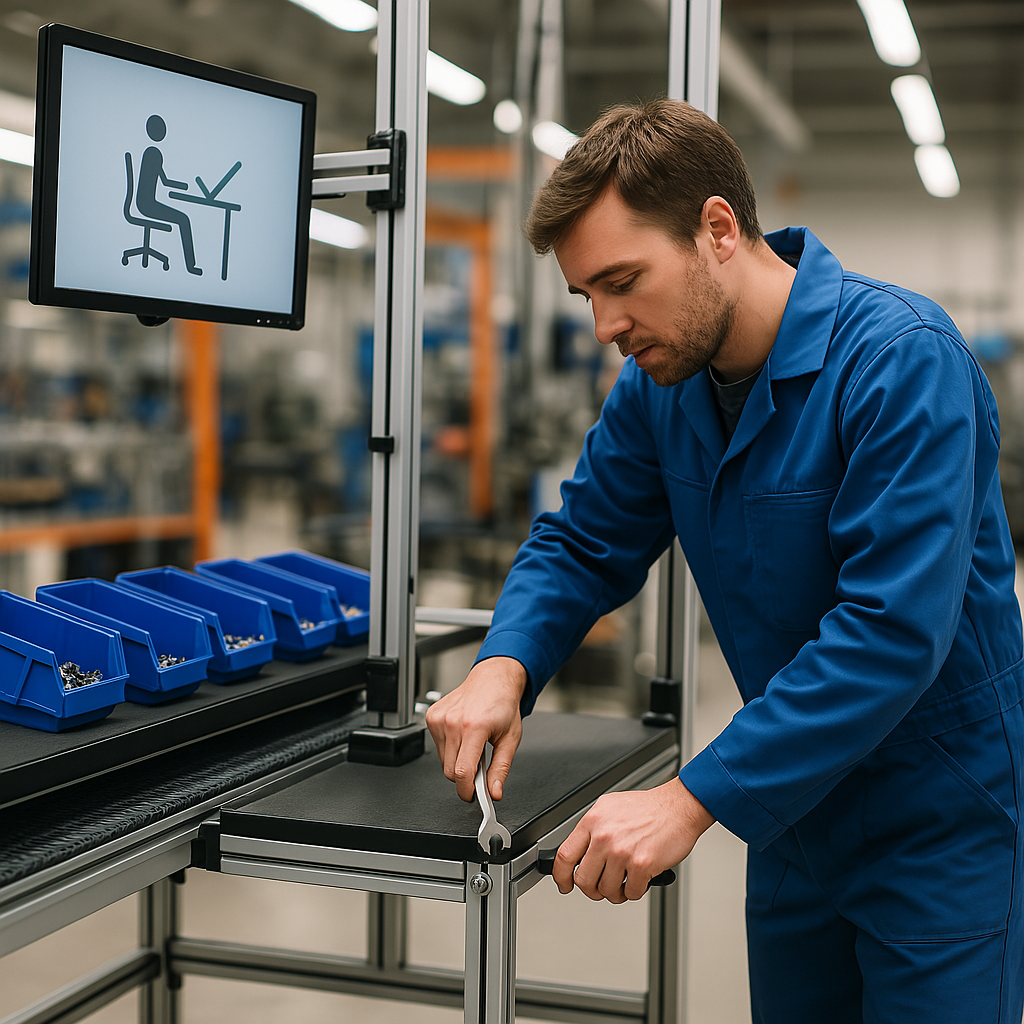In many manufacturing settings, workers perform hundreds—even thousands—of repetitive motions per shift. Whether it’s reaching, twisting, bending, or lifting, these movements build up wear and tear on the body, often leading to injuries that seem to “suddenly” appear. But the truth is, most of these incidents are preventable with the right ergonomic insights.
One of the most common issues is working with tools or materials placed at awkward heights or angles. A small change—like raising a table by a few centimeters or using angled bins—can dramatically reduce back strain. Similarly, rotating employees between different tasks reduces repetitive stress and allows muscle groups time to recover.

Manufacturing environments are also often fast-paced, which makes efficiency a priority. But ergonomics and speed aren’t opposites. In fact, improving ergonomics can enhance workflow by making movement smoother and reducing the need for awkward postures or wasted motion. With ergonomic redesign, workers can complete their tasks faster and more safely at the same time.
The biggest takeaway is this: preventing injuries doesn’t always require expensive equipment. Often, it just requires seeing the job from the worker’s point of view—and adjusting the environment to fit the human body, not the other way around.

Leave a Reply